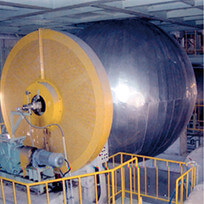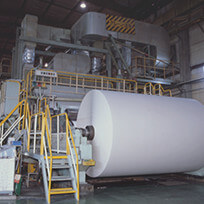
SURFACES REPORTER (SR) brings to you the surprising details of rugs and dhurries made from Japanese Paper Yarn. This is a part of SR #MeTooEarth campaign on the occasion of World Environment Day, 2021.
Natural Fibre made from Washi
Known as “Shosenshi”, paper yarn has older history than hemp or cotton in Japan. Although having excellent quality, paper yarn was hard to mass-produce and expensive. Aside from having the lightness of the paper, the Washi paper yarn has many characteristics as such as being durable, has no fluff, high absorption potential, quick-drying, and has high dye-affinity. Abaca, also known as Manila hemp, is applied as the base material, has fast growth and development, high carbon dioxide absorption potential, non toxic when incinerated, and biodegradable. Abaca is a dream come true eco-friendly material, which weaves into the future of our next generation.

Abaca Fiber
Abaca from Ecuador, which is stronger and high quality when compared with others, is applied as base material of the paper used to make Paper yarn. Not only having outstanding toughness, it is also very light, soft to the touch, and does not have fluff. Paper used as base material must be strong, thin, and homogenous since the yarn is made by twisting paper, which is sliced down to 1 mm in width. Compared to wood pulp, abaca has longer fiber, enabling to make stronger paper.
What is Abaca?
When asked about the base material for paper, we normally associate wood, but the base material of the Washi paper yarn, Abaca, is a type of perennial plant. Abaca is a Musaceae plant that inhabits in Philippines, and Ecuador. It takes about 3 years for the plant to grow as tall as 5~6m and 40cm in width, to become as base material. Abaca is very lightweight since its fiber is porous, consisting rich amount of oxygen. It is also highly water resistant not only to pure water, but also to sea water.

Abaca Plant
Manufacturing Process
Let us understand the manufacturing through images.
Step 1- Cultivation process (Cutting of Abaca from the base)
.jpg)
Step 2- Scutching Process (Tear the sheath to pull out the fiber.)
.jpg)
Step 3- Pulp Production

Step 4- Paper Making Process

Step 5- Slitting process (1-6mm long)
.jpg)
Step 6- Twisting process (Twisting to cones)
.jpg)
A fiber made from silky smooth hemp, and paper with strong water resistance

Dyed Paper yarn hanks

There are chemical fibers and natural fibers and each has filament and short fibers. Using the vegetable short fibers as the base material, filament is made by plowing long paper making it to become the one and only vegetable filament. Made by abaca, this paper yarn is a filament finished yarn, having smooth touch with excellence.
The rugs are available at Sterling Rugs, Bhadohi, India.
Contact- +91 99840 05333
About SURFACES REPORTER's #MetooEarth Campaign on World Environment Day
As part of our ongoing activities towards promoting environment friendly sustainable initiatives, SURFACES REPORTER has started the #MeTooEarth Campaign showcasing selected entries received from people with innovations, initiatives, designs, projects, products and activities from around the design world that inspire and take one step forward towards a eco friendly, sustainable future for all. Keep Watching this space..
#MeTooEarth | Projects & Innovations that will inspire you | World Environment Day Campaign by SURFACES REPORTER
#MeTooEarth | Quick Tour of Delhi Based Architect Nilanjan Bhowal Green Home | Surfaces Reporter
A building with microclimate|Marwah, Jalandhar | #MeTooEarth | World Environment Day, 5 June, 2021 | SR Eco project
Sustainable Design for Masses|5 days- Satsang Event, Rajkot | Studio 919, Ahmedabad, Gujarat | #MeTooEarth | World Environment Day, 5 June, 2021 | SR Eco project
Organic interior with limited budget| The Rustic Home, Pune | Silhouette Architects & Designers | #MeTooEarth | World Environment Day, 5 June, 2021 | SR Eco project
Keep reading SURFACES REPORTER for more such articles and stories.
Join us in SOCIAL MEDIA to stay updated
SR FACEBOOK | SR LINKEDIN | SR INSTAGRAM | SR YOUTUBE
Further, Subscribe to our magazine | Sign Up for the FREE Surfaces Reporter Magazine Newsletter
Also, check out Surfaces Reporter’s encouraging, exciting and educational WEBINARS here.